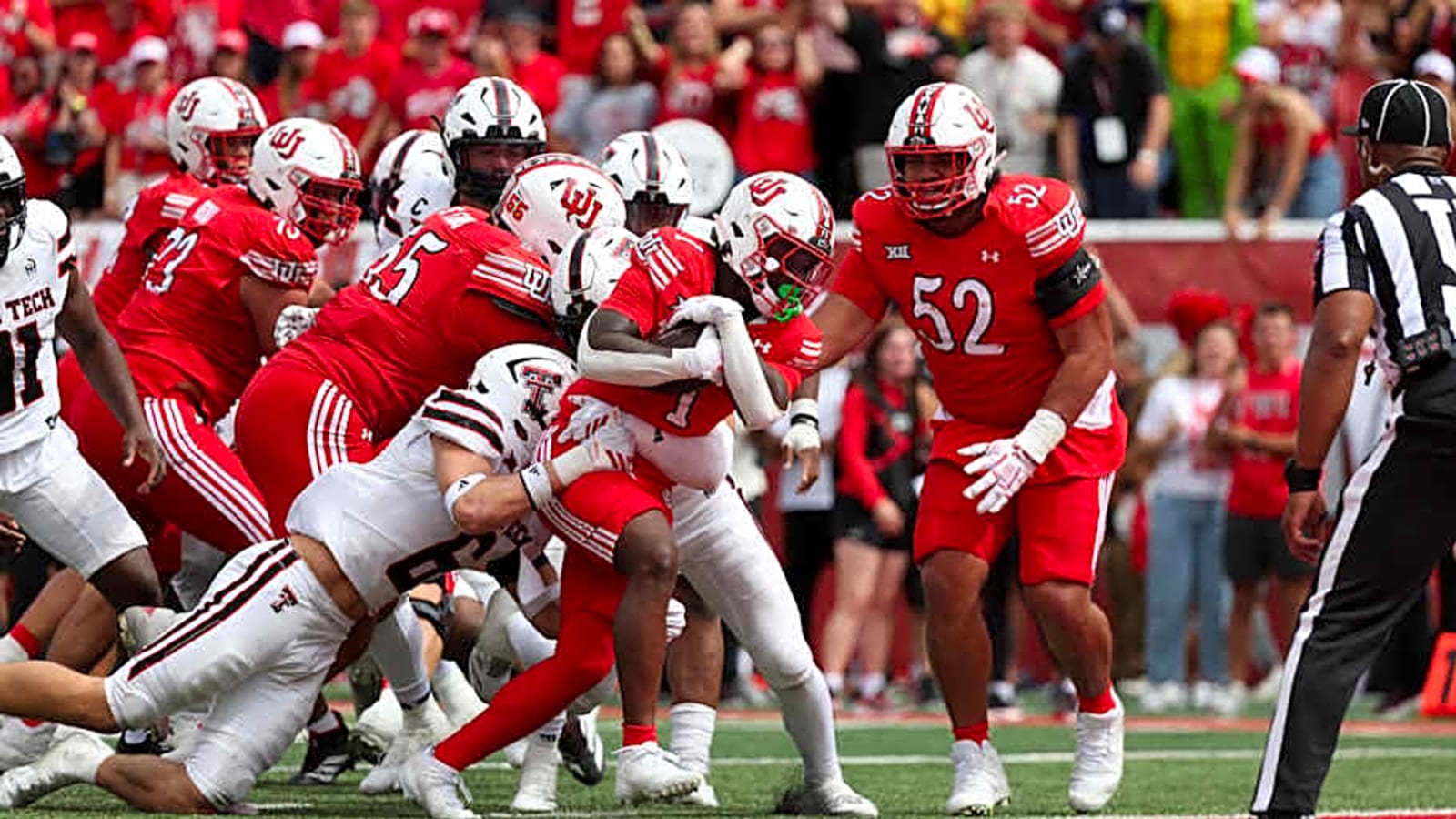
No. 16 Utah (3-1, 0-1 Big 12) entered the matchup with No. 17 Texas Tech (4-0, 1-0 Big 12) boasting one of the most physical and consistent rushing attacks in the country, but the Red Raiders had other plans. From the opening snap, Texas Tech’s defense dictated terms, using disciplined gap integrity, aggressive front-seven play, and well-timed blitzes to stifle Utah’s ground game to capture a 34-10 victory.
What unfolded was a tactical dismantling that forced the Utes out of their comfort zone and into a pass-heavy approach. This breakdown explores how Texas Tech’s defensive blueprint unraveled Utah’s run-first identity and reshaped the game’s trajectory.
Texas Tech’s defensive blueprint unraveled Utah’s run-first identity by attacking the core of the Utes’ ground game with layered disruption. The Red Raiders stacked the box early, daring Utah to throw, while maintaining disciplined gap integrity that clogged interior lanes and forced backs to bounce outside. Their front seven played downhill with aggression, using stunts and slants to confuse Utah’s blocking schemes and collapse running lanes before they developed.

Linebackers keyed on Utah’s zone-read tendencies, consistently beating pull blocks and limiting yards after contact. On passing downs, Tech disguised blitzes and rotated safeties into run fits, further muddying Utah’s pre-snap reads. As the game wore on, Utah’s offense grew increasingly one-dimensional, unable to establish rhythm or dictate tempo, exactly what Texas Tech’s scheme was designed to produce.
Linebacker Jacob Rodriguez set the tone for Texas Tech’s defense, leading the team with 11 total tackles while adding a forced fumble and an interception to cap off a dominant performance. Texas Tech’s defense limited Utah to just 101 rushing yards on 31 carries, bottling up the ground game to a modest 3.3 yards per attempt.
Texas Tech’s defense thrived in critical moments, holding Utah to just 4-of-14 on third-down conversions, many of which came in long-yardage situations after early-down run failures. The Red Raiders also applied relentless turnover pressure, forcing four takeaways (two fumbles and two interceptions) that disrupted Utah’s offensive rhythm and prevented them from establishing their signature ground game.

Texas Tech’s defensive performance against Utah wasn’t just a tactical win, but a huge statement. By shutting down one of the nation’s more physical rushing attacks, the Red Raiders showcased a blueprint built on discipline, aggression, and execution. From early run fits to late-game turnovers, every layer of the defense contributed to unraveling Utah’s identity and forcing them into uncomfortable territory. If Texas Tech continues to execute this defensive blueprint, they’ll be a relentless force down the stretch and a serious contender for the Big 12 crown.
More From Texas Tech On SI
More must-reads:
- Penn State makes shocking, and justified, drop out of AP Top 25
- Vanderbilt QB Diego Pavia gets into heated exchange with Alabama fan
- The 'MLB playoff debut strikeouts leaders' quiz
Customize Your Newsletter
 +
+
Get the latest news and rumors, customized to your favorite sports and teams. Emailed daily. Always free!








